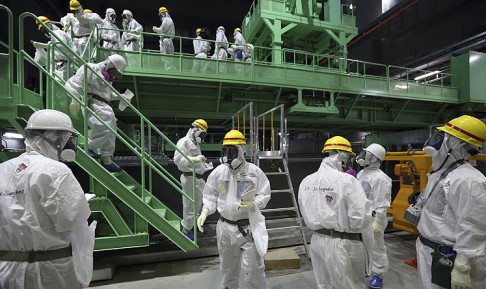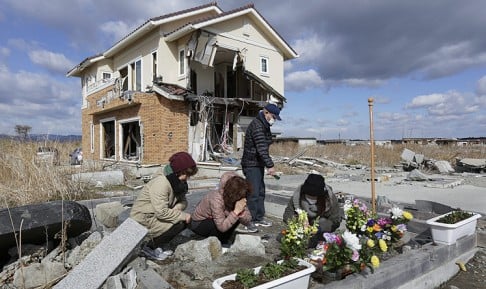Japan approves energy plan reinstating nuclear power despite public concerns
Decision to switch mothballed nuclear power production back on likely to be unpopular as Tepco continues to wrestle with problems at the tsunami-crippled Fukushima plant

Japan’s Cabinet on Friday approved an energy policy reversing the previous government’s plans to gradually mothball nuclear power plants, a move likely to be unpopular with a wary public following the 2011 Fukushima disaster.
But the plan may too little too late for the country’s moribund atomic industry, which is floundering under the weight of estimated losses of almost US$50 billion, forcing two utilities to ask the government for capital last week.
Plant operators have had to pay out almost US$90 billion on replacement fossil fuels, with local media saying they have also spent an estimated 1.6 trillion yen (HK$122 billion) on nuclear plant upgrades to meet new safety guidelines.
Recent analysis shows as many as two-thirds of the country’s 48 idled nuclear reactors may have to be left closed because of the high cost of further upgrades, local opposition or seismic risks.
“I think it is unavoidable that the Japanese utilities will write off most of their nuclear ‘assets’ and move on,” said Mycle Schneider, a Paris-based independent energy consultant.
The plan defines nuclear as an “important baseload power source” meaning it can feed constant power to the grid to meet minimum requirements. But the policy document did not specify the amount that nuclear should make up in the nation’s energy mix.
“Given the slim realistic prospects for a major nuclear share, the challenge will be flexibility and the whole baseload concept flies out of the window,” Schneider said.
The government also names coal and hydro-electric power as baseload sources.

“The plan makes clear we will reduce reliance on nuclear power through a variety of measures,” industry minister Toshimitsu Motegi told reporters after the Cabinet meeting.
Motegi said the government may decide on an ideal energy mix within two or three years.
Japan will do as much as possible to increase renewable energy supplies, Motegi said. The government has set up a ministerial level group to study boosting such energy sources.
In the plan on Friday, Japan said it would aim go beyond renewable energy targets in past plans.
“The Japanese utilities will write off most of their nuclear ‘assets’ and move on.”
A footnote in Friday’s document mentioned that previous plans had set a target for renewable energy sources to contribute 13.5 per cent of total power generation in 2020 and around 20 per cent in 2030. Renewable energy sources, including hydropower, contributed around 10 per cent of the country’s energy as of 2012.
The decision to reinstate nuclear power is likely to be unpopular and Prime Minister Shinzo Abe had to spend months convincing sceptical members of his ruling Liberal Democratic Party as well as coalition partner New Komeito, which opposes atomic energy, to accept the final draft of the plan.
The public has turned against nuclear power after watching Tokyo Electric Power Co’s (Tepco) struggle to deal with the disaster at its Fukushima Daiichi station following a massive earthquake and tsunami in March 2011.
The crisis was the worst since the Chernobyl disaster in 1986 and all reactors in Japan have been shut for safety checks with no schedule for restarts.

Two reactors in southwestern Japan have been put on a priority list for safety screenings by the country’s Nuclear Regulation Authority.
Recent polls put opposition to nuclear restarts at about two-to-one over support. An Asahi newspaper poll last month found that nearly 80 per cent of those surveyed supported a gradual exit from atomic power.
The Democratic Party of Japan decided on an energy policy that set targets for renewable energy and pledged to phase out nuclear power but it was swept from power by the LDP in elections at the end of 2012.
Abe’s government has dropped plans to introduce a demonstration fast-breeder reactor in 2025 and a commercial reactor before 2050 after decades of scandals and delays at the Monju prototype reactor.
The energy plan unveiled on Friday said Monju would become an international research centre focused on reducing nuclear waste and toxicity.
But the plan says the government will continue working on reprocessing nuclear fuel at the Rokkasho facility in northern Japan and maintain storage facilities for used fuel.